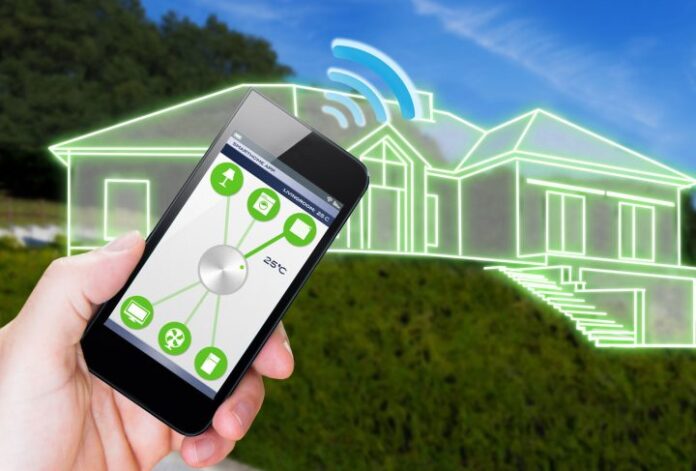As Wi-Fi celebrates 20 years of success and Wi-Fi 6 certification has started, Wi-Fi has never been so indispensable in the home. The home is rapidly becoming a dense environment requiring a new level of Wi-Fi performance and coverage to serve ever increasing number of devices and IoT. Service providers are now increasingly compelled to guarantee quality of experience all the way to the device. Managing home Wi-Fi lies the foundation for enabling the connected smart home including securing all these devices from cyberattacks. To achieve that, service providers need to be more agile and introduce new services and features better and faster or lose the battle for the connected home to the Amazon and alike.
However, the wireless footprint of these devices varies considerably and, unless some order is established, is a sure way towards an inconsistent Wi-Fi experience. Wi-Fi performance—and by extension the user experience—will suffer due to many environmental factors such as: congestion, noise, and interference. The CPE whether it is a gateway, router, or set top box is the brain in the house. There are a number of ongoing industry initiatives to improve the performance of the home CPE from the Wi-Fi alliance EasyMesh and Vantage program to the evolution by the Broadband Forum of TR69 with User Services Platform (USP) and Open Broadband Multi Access Point, all aimed at improving the way CPE behave and are managed by the operator. The Wireless Broadband Alliance ‘s In-Home Wi-Fi Industry Guidelines 2019 identified the gaps in current in-home Wi-Fi standards. The WBA aims to tackle the challenges that have contributed to inconsistent performance in the home, including a lack of uniform coverage and visibility into the in-home Wi-Fi experience.
There is also a trend to create a more agile CPE, one with an open-source, agnostic, middleware between the cloud and the home devices. The promise is for service providers to be able to develop, install, manipulate, and administer applications residing in the CPE stack. In light of so much increased complexity in the CPE and fast changing market requirements, many solution vendors have decided to pool parts of their source code. The benefits of making code available to others include faster development time, faster time to market and more cost-effective implementation. This is the case with the release 1 features of Easy Mesh which vendors have the option to either develop themselves, or, use the collaborative work or the prpl foundation. The “secret sauce” will remain mostly in the ability of the platform to collect dynamically, huge volumes of in-home user and device statistics. Product differentiation allows vendors to innovate algorithms to optimize performance. Capability reporting and link metric collection is relatively straightforward and “by the book.” However, how all that information is processed into intelligent decisions is where the innovation lies. For example, one vendor could use artificial intelligence in a local controller to understand and optimize the real-time needs of the mesh configuration. Another vendor could perform such processing in the cloud for a broader perspective. We were told by one of the vendors that release 2 will not have much impact and that attention is shifting to release 3 of EasyMesh to be released some time in Q2 2020, the details of which we had no access yet.
In its interesting article new revenue streams from the home won’t come without CPE containers, Domos suggests ISPs can now envision introducing new home services must faster and with less risk. Containers are applications encapsulated in its own “operating system”. The application gets a certain amount of resources (CPU, storage, memory, network), certain types of data, and certain possible commands defined by the Container Format. It is managed and run by a Container Engine. A simple CPE use-case example: A Wi-Fi Band steering module can be implemented in a container. The environment gives the module: 100 kb of memory and storage, 2% CPU, access to data regarding end-user devices signal strength and capabilities only. Finally, the only command made available is to send band-steering requests. There is nothing else possible to do for the container and the container engine handles any faults. On top of that, an ACS can easily do the installation, upgrades, and uninstallation. Some customers want advanced parental controls, some want Wi-Fi optimization, some want cybersecurity. If the CPEs deployed by the ISP has a container environment, they will be able to deploy containers with new services on the fly.
Innovation for a more robust connected home Wi-Fi and IoT is ongoing at a furious pace. Machine learning, new standards, open source, IoT, 5G are all driving rapid changes in the smart home and we want to what your thoughts are on these topics.
For operators, adaptive Wi-Fi is the first step towards converting the connected home into a smart-home by delivering a modern service delivery platform that is cloud-based, highly scalable, cognitive and leverages massive machine learning. Service providers will then be able to create new applications and services sufficiently well and fast to outpace the OTTs. Emerging home services will range from elderly care to home automation and gaming. Standardization, open source, and virtualization are rapidly shaking the world of home Wi-Fi and beyond.
Maravedis is conducting its industry survey for the connected smart home with a focus on managed home Wi-Fi. Your views will help us build a picture of the latest developments in Wi-Fi and related technologies that service providers are implementing to improve their business models and how they plan to develop their technology and services road-map towards the connected smart home and 5G.

